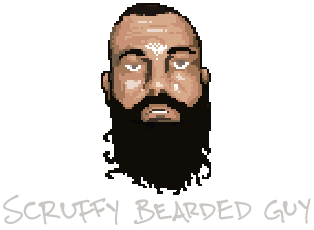
ARTICLES ABOUT CONTACT

So here we are—yet another remastered game has arrived. Time to rebuy and replay this classic—again—and imagine how it might have turned out if it were released today, right? Not really…
Remastering games is nothing new. In fact, it goes back to the early days of video games. The issue is that, nowadays it is losing its purpose, with a few exceptions that I will explain later. The motivation back in the day was to port the game to different types of hardware, while in some cases adding enhancements because of the hardware limitations at the time the game was developed.
You might ask, “So the limitations themselves were or are a bottleneck, right?” No—in most cases, the limitations were addressed in a remaster in more elegant ways, even if profit was involved. Hacking your way through to port the unportable—like Doom on the Super Nintendo by Randy Linden1— brought value to the table in many ways: landing a game title on new hardware, solving interesting problems instead of creating new ones, preserving history in a meaningful way by respecting the original title, or just having fun.
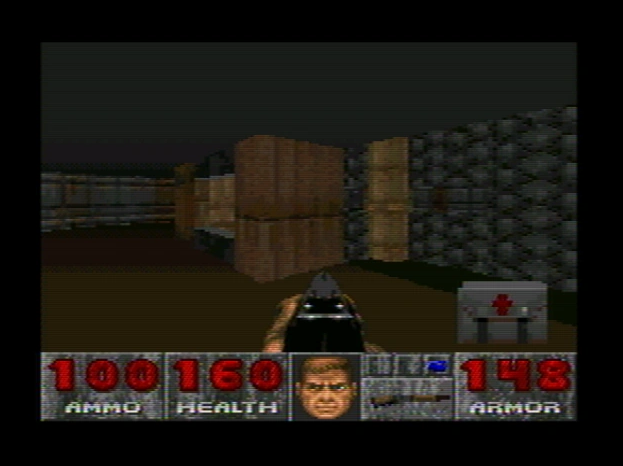
Of course, you can still have a meaningful remaster on the same hardware architecture, even as it evolves over time, but you have to respect the boundaries of the original limitations and approach the remaster in a sophisticated way. As long as the remaster preserves the original ideas of the creator—both technical and non-technical—with some minor tweaks (or major ones in some cases), it would make sense to have one.
From my perspective, living in a world with only ported versions of games—without all these remasters around (again, the ones that I’m opposed to not the ones that make some sense)—wouldn’t hurt a bit. In fact, we might even have game companies spending their time on something more valuable—that is, creating something new and original.
You have most likely heard about Bethesda’s latest release, The Elder Scrolls IV Oblivion: Remastered. In case you are not aware, Oblivion is an open-world Computer Role Playing Game (CRPG) based on the Elder Scroll series. For context, it was released in 2006.
For the remastered version, Oblivion was outsourced to a third party company, that has the “expertise” to adapt the game to Unreal Engine 5 (UE5), which added another problematic layer to the remastering. Don’t get me wrong, they did a fine job—most likely they could do it better—but UE5 comes with additional issues. Let me explain…
The game has its moments and can look quite good but also can look quite… off. Again, creating good visuals is not the point here and it’s not even enough to have a remaster that makes sense.
First of all, one of the characteristics that this title had when it got released was its vibrant color palette. For some reason, it looks like someone applied a cheap brownish filter on it. As soon as you get out of the sewers during the introductory part of the game, you will witness this:
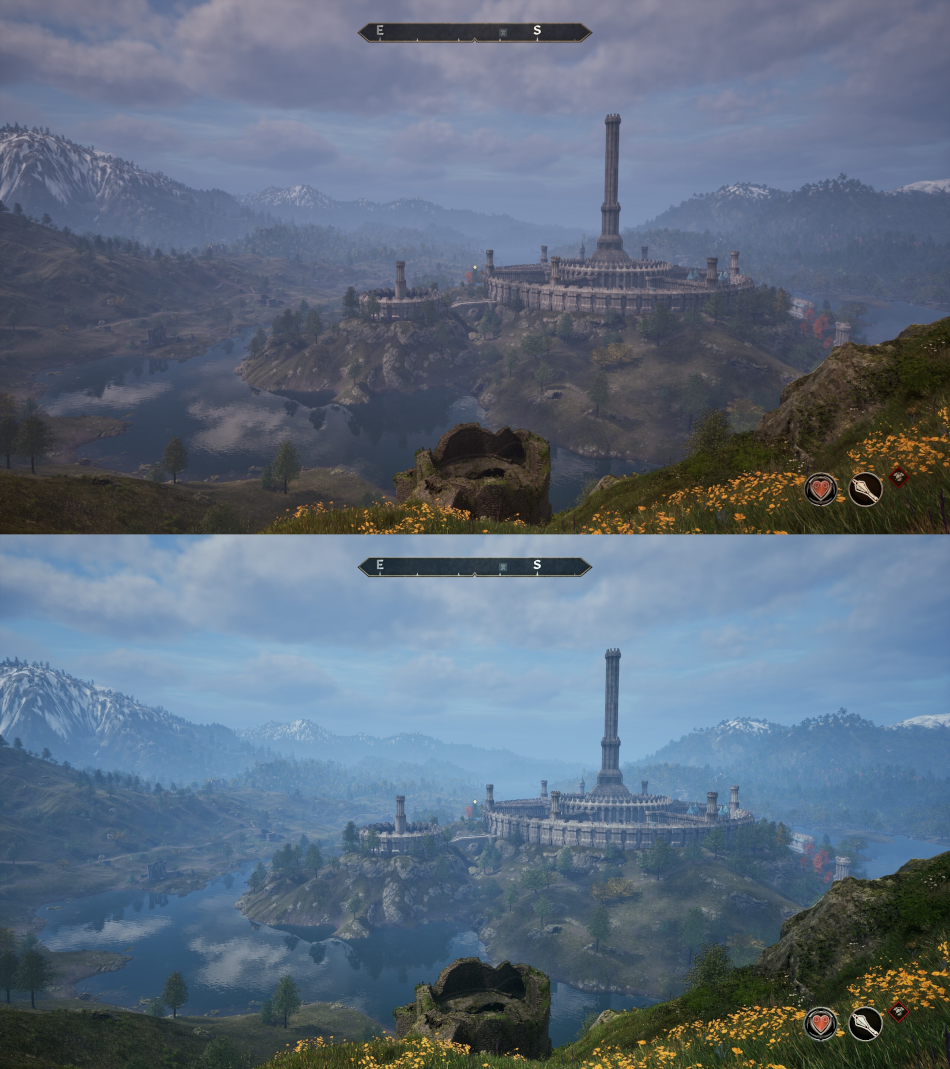
The screenshots were not taken directly after getting out of the sewers but the comparison above gives a better perspective.
I played for more than thirty hours, and basically, I witnessed all of the issues that UE5 has, but that wasn’t the reason that I was feeling off. During my playthrough, something was itching. I couldn’t figure it out in the first few hours, but then the obvious just clicked. I just wanted to re-install the original. Why? you might ask. Well, because from this remaster I got the same feeling again, the charm of the original was gone. I was just witnessing good visuals, or even great visuals in some cases, but it wasn’t clicking for me.
A major part in this, apart from the looks, was the simplification of some of Oblivion’s RPG mechanics, especially the leveling system. This was also one of the major parts of its charm. Yes, it can be really tedious, but it was—and it should be still—part of the game. Guess what. It isn’t. The urban legend that games should be streamlined for the wider audience emerged. So I realized that the game, additionally, wasn’t respecting my brain either.
So what happened eventually? Well, the original “painting” was violated way too much, and the charm wasn’t there anymore…
In case you’re wondering, there was no nostalgia involved. In fact, I didn’t play the game when it first came out in 2006. So I don’t have any fond memories to bring me back in order to feel the same way as when it got released. And I didn’t had any great feelings about the game all these years either.
So that’s what I did eventually. I installed Oblivion with some great mods to accompany it, and started my journey to witness the game in a “remastered” way that made actual sense to me. The visuals of the game are looking really good even without mods, but if you do not tweak the graphics too much—especially by not adding an ENB2—you can still witness the original experience.
The screenshots below were taken from the vanilla version and they are not using any visual enhancement mods or an ENB:
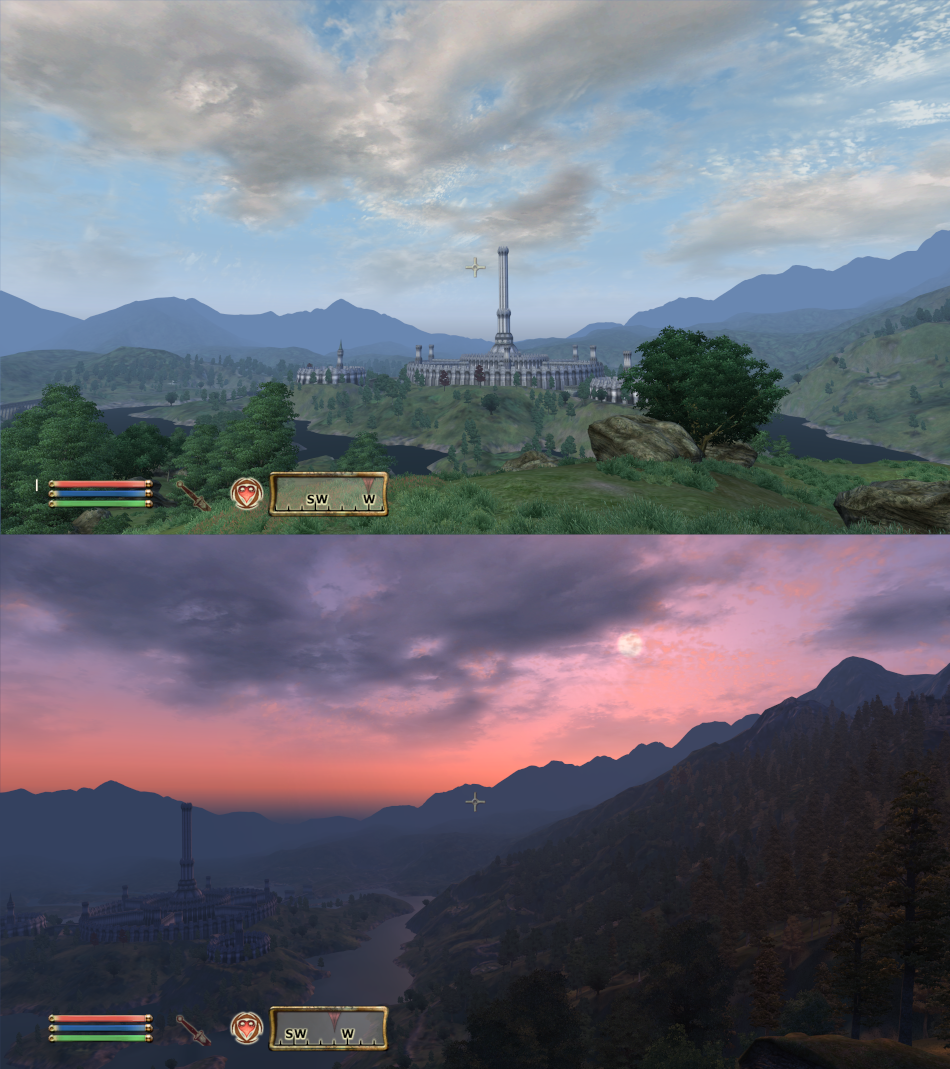
A good engine, but with many flaws for now, and still grinding to give the desirable results. Light propagation, stuttering, image quality flaws, blurriness, it’s all there. I’m not going to bash the engine here. Honestly, I don’t care that much—I just don’t like its marketing boosting. I don’t even have issues with the limitations themselves, but for now, Unreal Engine comes along with many issues. Both visually and performance-wise, it suffers.
The reality is that outsourcing a project with UE5 and reaching out to UE5 programmers, becomes a double-edged sword. It’s an engine that is more “accessible” than other 3D engines, since you can hire people more easily to do the job, but inevitably you have to start digging in order to find people that can actually deliver. It’s like seeking a good system engineer or a programmer. Most of the time you will not get a great one or even a very good one, but someone that can just do the job.
It’s great to have a toolset to create whole new environments and all, but the expectations when you buy an actual game are very different from what you (should) be able to do as a hobby.
It’s obvious that things are still under development—which is not necessarily a bad thing—the bad thing, as I said, it’s how they are selling it. Take a look at how they are collaborating with CD Projekt Red to optimize Witcher IV. The tech demo was a pure advertisment, it looks upscaled, and again, it carries some of the viewing issues that most, if not all, of the UE5 have, but let’s wait and see…
What makes a remastered game feel even more out of place is when the gameplay changes are not so dramatic per se—if that’s the case we would have been talking for a different game—but they are so distinct that they can actually change part of what the game was about in terms of gameplay mechanics.
Think of it like having multiple layers that describe the gameplay. One of those layers can be the leveling system, where instead of adding an additional layer above the original system they replace it with a newer, “improved” one. A great example can be—again—the changes to the leveling system that were applied in Oblivion: Remastered. I am not going to defend the leveling system of the original Oblivion, but at least it offered a complexity that could be fun, challenging, and tedious altogether, depending on your playstyle.
In brief, during the character creation you had to choose a class or create a custom one and choose your major skills. By using any combination of your major skills ten times during your playthrough, you would qualify to level up. During a level up you have the opportunity to raise three of your attributes.
Here’s the catch though… Depending on which skills you will choose to level up, this will determine how many points you will get to raise the attribute that is associated with these skills. Attributes can be raised with a bonus that can reach +5, meaning that you can actually get +5 bonus points for an attribute, if you manage to raise the assosiated skills that concern that attribute. You can get the +5 bonus for all three attributes, which means minor skills also play a big role to this, so if you want to min-max you would need to manage your resources quite carefully.
There are many strategies that you can utilize, starting from, which skills are going to be your major ones, which are going to be your minor, again, depending on your playstyle. You can also have a more relaxed approach, just play the game, maybe get one or two +5 bonuses, and add points to Luck which adds a modifier all of your skills while it doesn’t assosiate with any specific skill. There are various options to choose from.
The truth is that the biggest problem is the leveled world and not the leveling system itself. If you make some unforgiving mistakes your character will stay behind and the enemies will become more difficult. You can still solve that by adjusting the difficulty.
The leveling system in Oblivion: Remastered system is not the same. It is actually more “simplified” and was quite vague on release, just because there was no valuable information given. Luckily we do have the Unofficial Elder Scrolls Pages (UESP) to give us all the information in detail.
All skills contribute to increase your level just like in Skyrim. You can basically use whatever skills are usable in order to boost your character. Additionally, on every level-up you gain twelve virtues to increase your attributes. Luck specifically requires four of them in order to get a +1 gain. You can however utilize +5 to one attribute. Enemies scaling is still alive and well. Some additional changes, like giving experience for free after breaking a lock, are among the many examples of simplification for no actual reason.
As much as I love Skyrim for its atmosphere, I can no longer play it without Requiem3. Its vanilla leveling system was so much downgraded and simplified that it made Oblivion look quite sophisticated. You can argue that some of the new changes in Oblivion: Remastered technically made some sense, but overall it’s like they picked up an old engine and polished it with Skyrim nickel spray.
Tweaking the gameplay—or rather streamlining it—just because there’s this urban myth that games need to be simpler for the wider audience in order to sell more, is honestly rubbish.
We do have games that are intelligent, with interesting aesthetics, engaging mechanics, and really high difficulty—and guess what, they had great sales. It just so happens that many companies took the easy way out.
What happened with the leveling system in Oblivion: Remastered, and all the vague changes that they applied to satisfy the mainstream audience, didn’t matter that much.
I’m pretty certain that the game would had the same exact sales if the original leveling system had been kept in place. They could have at least provided an option to choose between the old and the new system, and I still believe that many players would choose the old one. More options, more challenges, more fun. Amazing, right?
Play on the original hardware. Seriously, what did you expect? There are no arguments for this one. The best way to relive the experience at 100% is by owning the original hardware. The only exception here is that I personally might be using a different piece of hardware to have a better interactive experience.
As an example, playing Another World in my Amiga 500 with a Competition Pro Joystick might ruin my experience from time to time. This god damn thing is so stiff that it’s testing my patience, especially on difficult segments during gameplay. So I will allow myself to play the game with my new joystick instead. That would be the only exception that I would make.
But what if someone does not own a Super Nintendo or an i486DX2-66? Well, if that is the case, then there are some good alternatives, and with the right configuration you will have a good experience.
For the record, when a game has to run in a 4:3 resolution, please never, NEVER, stretch the aspect ratio. Please, play the game on the original 4:3.
Fire up the game and try to emulate the original title as much as possible, since emulators offer numerous options to “enhance” the graphics. Do the same with the sound when applicable. Specifically for older PC games, when thet were designed to use specific sound modules, it would be a great opportunity to compare your original experience from back in the day and emulate the sound/music as it was envisioned by the musicians back then.
Especially on the FPS genre, there are multiple soure ports to try. Good examples here are GzDoom and of course Chocolate Doom which does an excellent job emulating the original Doom games. Quakespasm together with MarkV are also great ports for the original Quake that you should try.
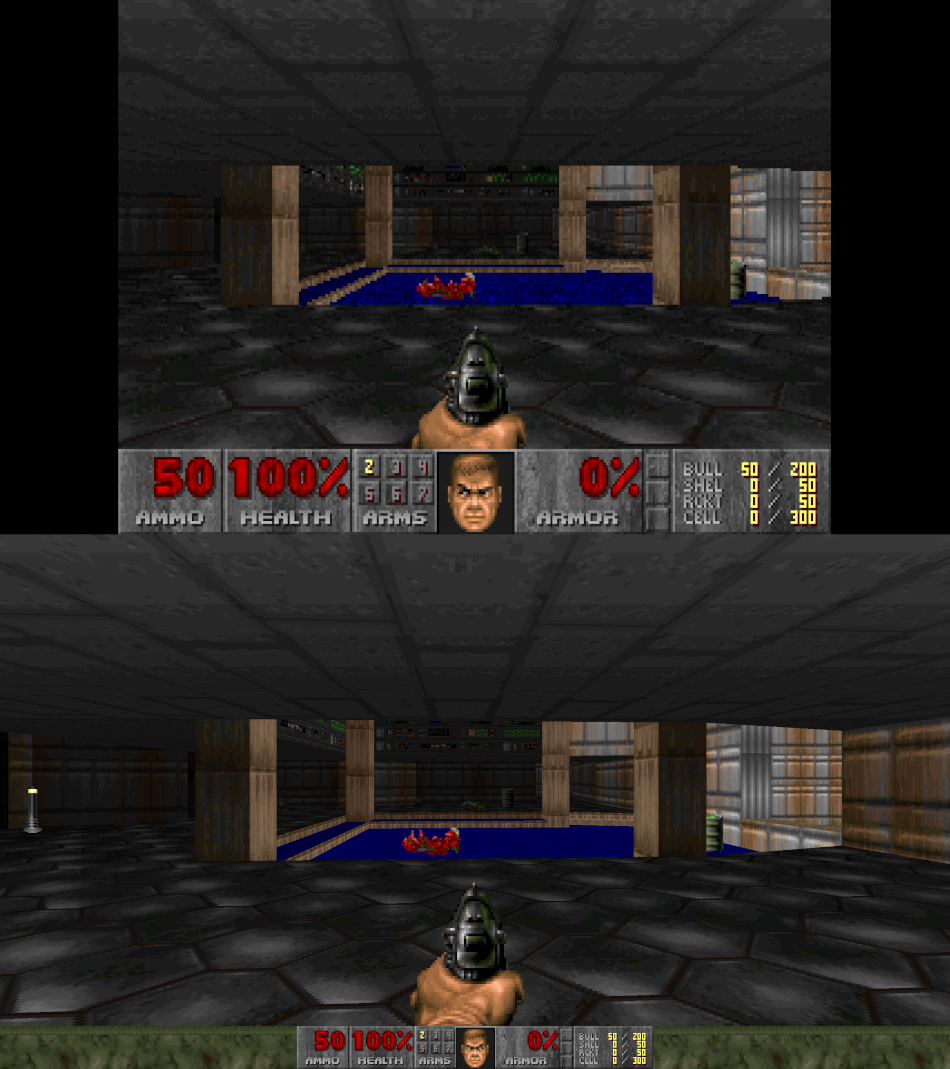
Mods are another way to give a hand to a game to run smoothly on a newer machine. There are multiple mods that provide higher resolutions, without adding any fluff. Usually here we’re talking about some quality of life changes as people like to say, which they can be quite convenient for sure. Nexus Mods and ModDB are the best resources.
Fire up a virtual machine if you have the appetite. I did that in the past many times but it’s rarely the case now. Nevertheless it’s still an option. You can install the operating system that the game is compatible with, and fire up the game. You would need to set it up in such a way that it can adjust to your hardware.
There are multiple games, especially from the Arcade era, that got re-released and some old classics from consoles that kept the original feeling, with the difference that they are optimized to run on your hardware today. Obviously not all of them are ports, and many could fit on the emulator section. So why buy the game in the first place? Maybe you don’t own it. In any case, at least purchase it via GOG which is DRM-free.
For GNU/Linux users, using WINE or Proton can be quite beneficial, for the obvious reason that you can run a Windows game on your GNU/Linux machine. I can’t stress enough how much WINE contributed all these years not only in games but running Windows applications in general. Proton is basically a port of WINE by Valve specifically for running games via Steam.
I used WINE countless times to run Windows games on my GNU/Linux box. In fact I do have a wine directory with multiple games in it. The funny part is that a good portion of these games will need a large amount of time to configure on a modern Windows machine but they will run without issues under WINE.
Whether video games can be considered art or not, one thing is certain: they do contain artistic expression in multiple forms—visuals, sound, music, programming—and this is undeniable.
Constraints are one of the elements that can foster creativity, in all art forms, not just video games. If the remaster is a crappy one, the original artistic vision is no longer there; you’re just imagining it. In fact, it’s someone else’s vision. All art forms involve creativity and their identity stems from that creativity. When you take the decision to remaster art, inevitably the identity is fading out.